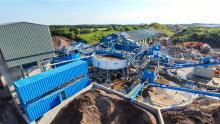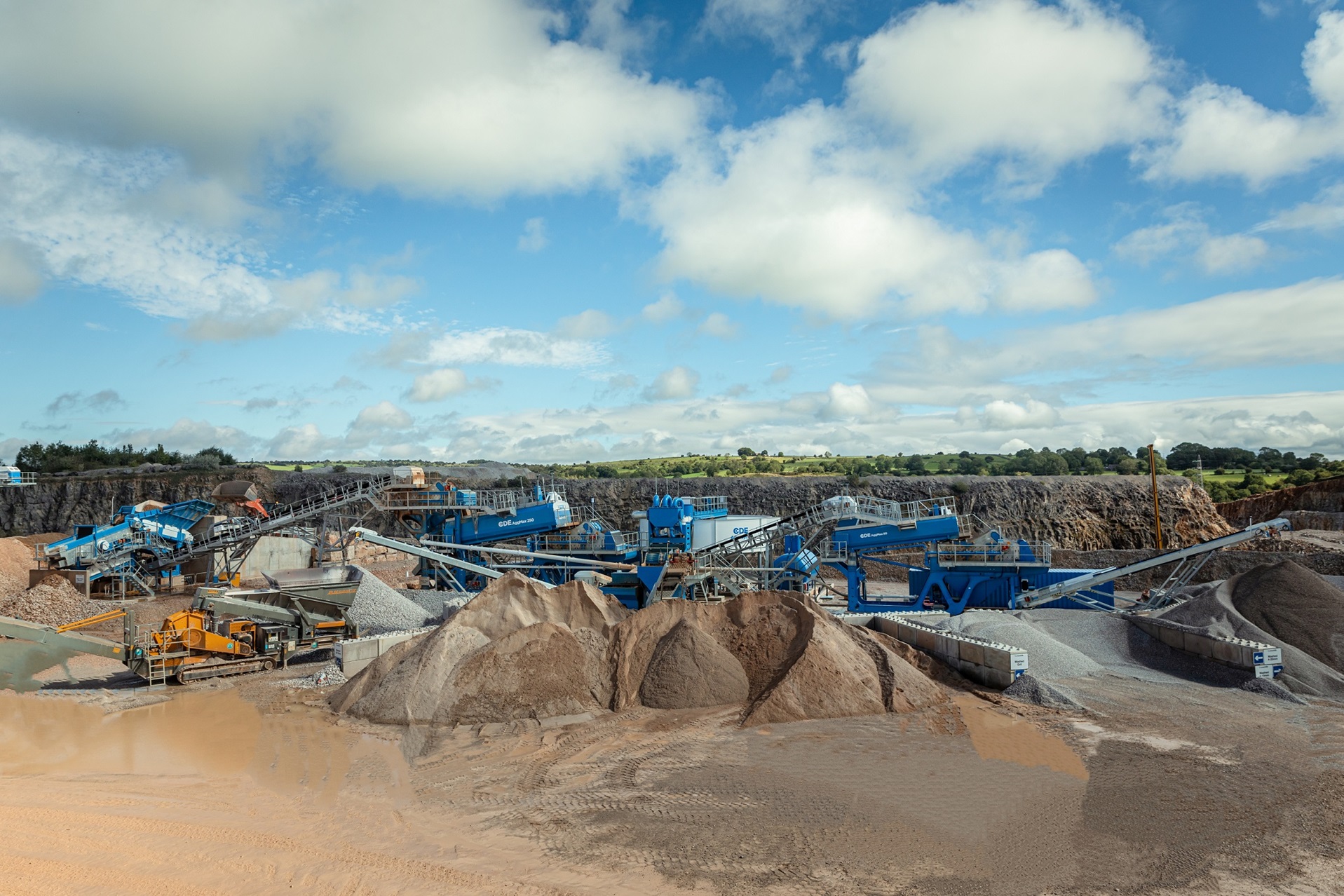
As the rate of global resource extraction continues to accelerate, finite natural materials continue to deplete, and barriers to gain approval for new mineral extraction sites mount, CDE, a leading supplier of sand and aggregate washing solutions for the waste recycling and natural minerals processing sectors, is encouraging materials producers to reappraise their waste streams to get more value from their operations.
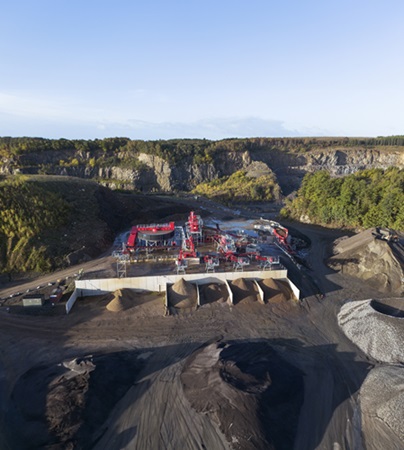
Sand and aggregates are among the most important resources for everyday life. They’re needed for the construction of the roads and pathways we travel on, the buildings we live and work in, the microchips powering our technology, and so much more. They are indispensable resources for modern living, yet they are finite and require careful resource management.
In 2020, mining and quarrying accounted for 23.4% of total waste generation in the EU[i], while the latest Global Resources Outlook report, published by the United Nations Environment Programme, suggests resource extraction could rise by 60% to 160 billion tonnes over the next three decades[ii].
Mining and quarrying operations generate significant volumes of waste by-product as part of their process but within these waste streams there is opportunity, explains CDE’s Eunan Kelly, Head of Business Development for Europe.
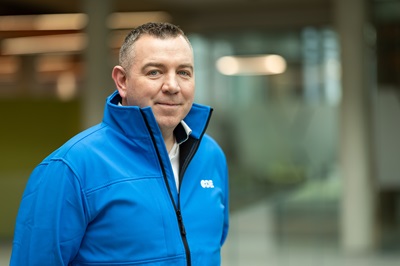
“Overburden, scalpings, crushed rock fines or quarry dust – they’re part and parcel of the mining and quarrying process, and an inevitable by-product. But a product they are. Too often these masses are categorised as ‘waste’ or low value material when in reality they possess significant potential.”
Where overburden concerns the clay-bound top layers of soil and subsoil above bedrock that are removed as quarries and mines expand, scalpings are the contaminated stones removed during primary screening in dry processing plants, and crushed rock fines are a by-product of the dry rock crushing process, which typically produces a low-value product with very high fines content.
Eunan continues: “When processed with the right technology, most of these seemingly low-quality by-products can be marketed quite profitably. That means today there are years’ worth of reserves and billions of tonnes of value-adding materials just sitting in stockpiles throughout Europe that can both ease pressure on resource extraction while creating new or additional revenue streams. It is crucial we start to maximise the available reserves and tackle dirtier material.”

The traditional approach to managing waste by-product such as overburden, scalpings, and crushed rock fines is to stockpile them on site, which is generally symptomatic of the limitations of the technology employed on site at the time.
Norwegian aggregates producer Feiring Bruk had amassed stockpiles containing hundreds of thousands of tonnes of crushed rock fines at its Lørenskog site. This material, which would generally have been deposited, is now being processed by CDE washing technology to recover valuable products, including 0-2mm fine sand, 2-4mm sand and 4-16mm aggregate. Additionally, together with its Norwegian partners Nordic Bulk, CDE recently supplied a second plant to Feiring Bruk’s Bjønndalen quarry to enable the recovery of up to 300tph of similar quarry dust material, helping the company to reduce waste and preserve natural resources in Norway while recovering valuable sand and aggregates that are in-demand in the construction industry.
CDE’s patented washing and processing allows quarry operators to transform “unwanted” by products, that may have been sent to landfill, into high-value sand and aggregate products that can be sold straight off the belt.

Longcliffe Quarries, based in the UK, had historically discarded its claybound limestone scalpings, but feasibility studies and material testing found there is a market for products recovered from this waste stream. Powered by a 220 tonnes per hour state-of-the-art CDE wet processing plant, up to six different products are being extracted from clay contaminated material, which is creating new, high-value revenue streams and helping reduce net emissions on site.
Conventional dry processing equipment has its drawbacks with quarry waste by-products, which typically have high clay and fines content, but advances in washing technologies are shown to overcome these challenges to produce high-quality sand and aggregates and maximise product yield from quarry waste.
“Reprocessing by-product stockpiles can extend the operational life of a quarry, reduce storage, transport and disposal costs, frees up valuable space on site and helps close the gap between demand and supply. This is particularly important as new permits for resource extraction are harder to come by,” Eunan adds.
“These materials are sometimes viewed as a barrier to be overcome when trying to access more desired material, or an unwanted leftover when the process is complete. We want to support materials producers to realise the full potential of their reserves and a big part of that is recognising that overburden, scalpings, and crushed rock fines also have inherent value as the success of our recent project with Swerock demonstrates.”
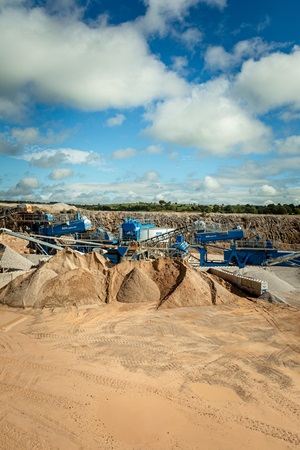
Recently, CDE designed and engineered such a solution to support Swerock, one of Sweden's largest suppliers of materials and services to the construction industry, to reprocess historic quarry waste stockpiles of overburden material at its Quarry in Blentarp. Processing up to 250 tonnes of quarry waste overburden per hour, the CDE wash plant is enabling Swerock to produce six saleable sand products: 0-2mm, 2-4mm, 4-16mm, 16-32mm, 32-100mm, and +100mm.
With the right processing technology, billions of tonnes of 'quarry waste' produced around the world have the potential to be turned into in-spec products for high-value applications. For more information about CDE and its washing solutions engineered to make the most of natural resources, visit CDEGroup.com/quarry-waste.
[i] Waste statistics, Source: Eurostat (env_wasgen)
[ii] Global Resources Outlook 2024, UNEP, International Resource Panel (IRP)




